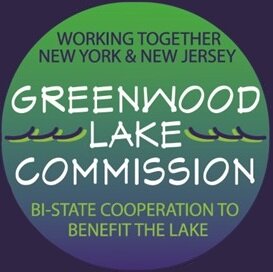HISTORY OF GREENWOOD LAKE
Greenwood Lake was originally known as Long Pond and was acquired from the Minsis subtribe of the Lenni-Lenape Indians in 1707. Agriculture was the primary activity during the 18th and early 19th century, however, iron mining and forging were also increasingly important with the exploitation of iron ore deposits within the surrounding areas. During the Revolutionary War, the Greenwood Lake valley was considered an important industrial center with the Towns of Warwick and Pompton Plains serving as the major population centers. A dam was constructed as early as 1765 to support the sawmills, forges, and grist mills within the region, but in 1836 a more substantial dam was constructed near the Wanaque River on the southeastern portion of the lake.
This dam was initially developed in order to provide water to the Morris and Essex Canal. Construction of the dam resulted in an increase in the elevation of the lake by 12 feet to the elevation that largely exists today. Construction of the dam also resulted in the flooding of previous upland areas within this area and this is the primary source for many of the tree stump fields that are currently located within the New Jersey portion of the lake south of Storms Island. With the increased elevation and extent of the lake, the surrounding area became much more attractive as a tourist destination for people from the more urban areas to the south and southeast.
During the 19th century, Greenwood Lake became recognized as an attractive vacation spot, particularly for residents of New York City. With this increasing popularity, many hotels and seasonal cottages were developed in close proximity to the lake starting in the 1870s. In addition, steamboat and rail transport to the lake was also available. In the 20th century, winter recreation, in addition to the existing summer recreational opportunities at the lake, were common and the area became a year round resort area. As a result of this, the Village of Greenwood Lake in New York eventually incorporated in 1924.
The popularity of this area as a recreational destination continued until about the 1940s when the tourist trade began to decline. Although it had occurred prior to this, it was about this time that much of the previously seasonal housing stock, particularly along the New York side of the lake, were converted into year round residences. These conversions also occurred within the New Jersey portion of the lake, although more year round residences had already historically existed within this area.
Recreation and tourism, however, has continued to be the most important industry for Greenwood Lake and the surrounding area with boating, swimming, water skiing and fishing as ongoing activities. This typically occurs between April and October, but the lake is also utilized during the winter months for ice fishing, snowmobiling and other uses. Land uses within the immediate areas surrounding the lake and the larger drainage area today are almost exclusively comprised of residential and park uses. The latter are comprised of several state parks within New Jersey, as well as the Appalachian Trail which is located west of the lake. Additional commercial uses are largely focused within the Village of Greenwood Lake to the north and the Township of West Milford to the south. Approximately 80% of the watershed area is forested.
PHYSICAL CHARACTERISTICS
Greenwood Lake is located in Passaic County, New Jersey and Orange County, NewYork. The lake is one of the largest lakes within the Highlands region of northern New Jersey. The lake is bounded to the north by the Town of Warwick and Village of Greenwood Lake in New York and to the south by the Township of West Milford in New Jersey. The lake is the headwaters of the Wanaque River which drains to the Monksville and Wanaque Reservoirs which make up part of the drinking water supply for a significant portion of northern New Jersey, approximately 3.5 million people.
The Wanaque River drainage area, inclusive of Greenwood Lake, and the catchment area specific to the Monksville Reservoir are the primary inflows to this reservoir. As a result, maintenance of the water quality within Greenwood Lake is important to the downstream public water supplies.
The lake is approximately nine miles long and has a maximum width of approximately 0.7 miles. The lake itself encompasses approximately 1,884 acres and consists of two uniquely different basins. The New York portion of the lake is much deeper than the New Jersey side of the lake with water depths up to approximately 60 feet and steeply sloped banks. In contrast, the southern portion of the lake only has a maximum depth of approximately 10 feet and is characterized by gradually sloping banks. The significant difference in characteristics between the two basins can largely be attributed to the fact that the New York portion of the lake is comprised of the original naturally occurring portions of Greenwood Lake, while the New Jersey end of the lake was largely man-made when the dam was constructed in 1836 near the Wanaque River, flooding those portions of the lake that were largely located within New Jersey.
The watershed drainage area to the lake is approximately 16,036 acres and as noted previously, is comprised of primarily residential and park uses and large forested areas. Several streams also flow into the lake with the largest being Belcher Creek located in the southwestern portion of the lake. The eastern and western boundaries of the lake are characterized by steep mountain ridges which parallel the shoreline of the lake. These have served to largely limit development along these shorelines to the areas in close proximity to the lake. Several smaller lakes including Pinecliff Lake, West Milford Lake, Reflection Lake and Capri Lake are also located within the drainage area of the lake and represent the headwaters of Belcher Creek.
